What to Do with Your Retirement Plan During Lay-Offs or Furloughs
Insights from experienced financial professionals.
In an attempt to slow the spread of the coronavirus, the government has shut down numerous businesses throughout the country, and others have drastically cut hours. As a result, over 10 million workers filed for unemployment in March 2020, and the number continues to rise.
If you have lost your job or been furloughed, you may be wondering what to do with your retirement account. Depending on your situation, you may want to consider one of the following options.
1. Do Nothing
If you don't need the funds in your 401(k), you can leave them there. This option applies to both laid off and furloughed workers. The only exception is if you left your job and you have less than $5,000 in your account. In that situation, your employer may automatically distribute the funds to you.
Note that because the markets have dropped, you may notice your account balance going down. If you're worried, you may want to consult with your plan administrator, but don't be too concerned. Historically, markets always recover after a drop, and your investments should be set up to weather ups and downs between now and retirement.
2. Roll Over Your Funds
Left your employer? Then, you may want to roll over your funds into a new retirement account, but you also have a few other options. As indicated above, if permitted, you can leave the money in your former employer's plan. If you have a new employer, you can roll the funds into their plan if they offer a plan and it permits rollovers.
Alternatively, you may want to roll over the funds into an Independent Retirement Account (IRA). You can request to have your pan administrator do this. If that's not possible or desirable, you can do the rollover yourself, without incurring any tax or penalties, but you need to deposit the funds into the new account within 60 days of taking them out of the old account.
Finally, you can cash out your retirement plan, but if you choose this option, make sure you understand the penalties involved and the tax implications.
3. Apply for a Loan from Your 401(k)
If you're still with your employer, you can apply for a loan from your 401(k). Generally, you can only borrow the lesser amount of 50% of your balance or up to $50,000, but the Coronavirus Aid, Relief, and Economic Security (CARES) Act doubles the limit to $100,000.
You don't have to pay income tax or penalties on your loan, but usually, you need to repay the funds within five years. If you leave your employer or get laid off while you have the loan out, the loan typically switches to a withdrawal and then you have to pay income tax on the funds.
4. Take Out a Hardship Withdrawal
To help people deal with the effects of the coronavirus, the government has expanded the rules on taking out hardship rules from 401(k) accounts. If you need extra financial help, you can withdraw up to $100,000 from your 401(K), but this option is only available if you, your spouse, or your dependents have the coronavirus.
Typically, when you withdraw funds before you turn 59.5 years, you have to pay a 10% penalty, but in this situation, you don't have to worry about the penalty. Once you have the funds, you have to report the withdrawal as income, but you have three years to pay the income tax on this amount.
Note that retirement plans all have different hardship rules. For instance, some plans may require you to exhaust other funding sources before you take out a hardship withdrawal. Talk with your plan administrator to learn more.
The opinions voiced in this material are for general information only and are not intended to provide specific advice or recommendations for any individual. To determine which investment(s) may be appropriate for you, consult your financial professional prior to investing. All performance referenced is historical and is no guarantee of future results. All indices are unmanaged and cannot be invested into directly. The information provided is not intended to be a substitute for specific individualized tax planning or legal advice. We suggest that you consult with a qualified tax or legal advisor. LPL Financial Representatives offer access to Trust Services through The Private Trust Company N.A., an affiliate of LPL Financial. LPL Tracking # 1-983243


